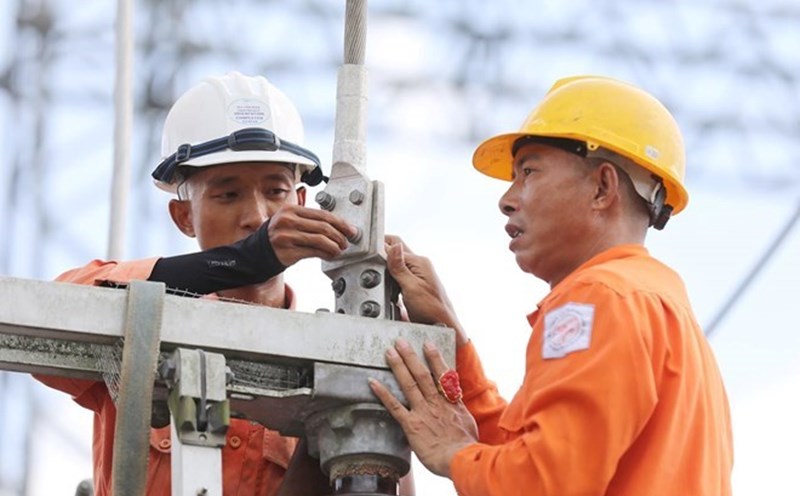Increasing transparency of origin, reviewing tax policies
The US's application of countervailing tax policies to many major trading partners in the world, including Vietnam, is opening up remarkable changes in bilateral economic relations. This is not only a challenge but also an opportunity for Vietnam to review its development strategy, improve competitiveness and consolidate its position in the global market.
Speaking at the policy seminar "US counterpart tax policy: Strategic impact and adjustment for Vietnam" organized by the National Economics University on the morning of May 8, 2025, according to Associate Professor, Dr. Phan Huu Nghi, Deputy Director of the Institute of Banking and Finance, National Economics University, Vietnam's adaptive solutions need to aim at four goals: minimizing the negative impact of counterpart taxes on export enterprises, stabilizing domestic markets and supply chains, maintaining the trust of investors and international partners, and turning crises into reform drivers, improving competitiveness.
To achieve those goals, Vietnam needs to first build a mechanism for controlling and transparently assessing the origin of goods. In particular, it is necessary to prove the percentage of domestic value and value originating from China or ASEAN. This is to help negotiate to achieve a suitable tax rate, helping businesses survive and develop without breaking the supply chain, emphasized Associate Professor, Dr. Phan Huu Nghi.
Another important solution is to review in detail the portfolio of goods that could be taxed with the US to move towards trade balance. This content should be associated with Vietnam's comparative advantage so that after negotiations, it does not affect previous agreements that Vietnam has participated in, and that Vietnam is not dragged into trade negotiation rounds with other major trading partners.
In the short term, the State needs to support affected businesses and industries, both helping businesses overcome difficulties and ensuring growth of 8% in 2025 and the following years. The level of support needs to be calculated to be able to compensate for most of the damage after being taxed, said Associate Professor, Dr. Phan Huu Nghi.
On the side of businesses, Associate Professor, Dr. Phan Huu Nghi noted: Enterprises need to proactively prove the origin of goods and trace the supply chain. This is also an issue that the US raised when comparing it with South Korea and Japan during the negotiations. Vietnamese enterprises also need to gradually invest in digital transformation technology, diversify input, and avoid origin risks.
Adjusting long-term strategies, selecting key industries
Referring to the adjustment of Vietnamese trade policies in the context of the United States imposing reciprocal taxes, Associate Professor - Dr. Ta Van Loi, Principal of Business School, National Economics University, said: “Vietnam needs to review the trade -up goods group to the United States and negotiate to reduce tax pressure on this group. In addition to the Super -Luxury United States, the rest will ensure the tax incentives committed and share the tax burden if possible. ”
For the group of Vietnamese exports such as textiles, footwear, wooden furniture, and seafood, it is necessary to clearly analyze the Vietnamese value chain that benefits from the new tax value. Vietnam needs to adjust its comprehensive economic development strategy with a long-term vision, clearly identifying key industries to focus on investment. In the future, many simple industries and services will be eliminated due to digital transformation and robotics, automation, and artificial intelligence (AI). Therefore, it is advisable to propose selecting semiconductor technology, AI, software, digital economy, nuclear, and new materials to open the door for US businesses to enter Vietnam, Mr. Loi emphasized.
Associate Professor - Dr. Ta Van Loi also proposed: "Encouraging the development of the private economy; changing the approach to trade and investment relations from passive to proactive and needing balance in both directions, will achieve more optimal benefits".











